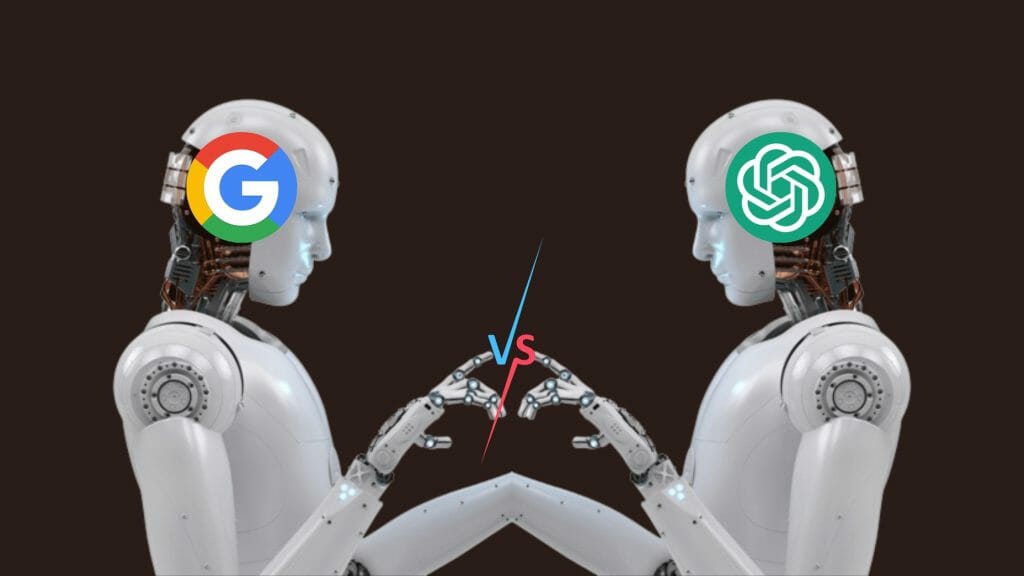9 Key Advantages of AI in Recruitment and Talent Management
Have you heard about Google's latest AI tool called Bard? It's causing quite a stir in the world of search engines. Bard uses Google's Language Model for Dialogue Applications to provide more detailed answers than your average Google search. Plus, it's designed to give you simple answers, not just a list of search results.
ChatGPT vs Google’s Bard
So, what's the difference between Bard and our good friend ChatGPT? Well, both services will let you ask a question and get a human-like response. However, Bard will constantly pull information from the internet to ensure you're getting the latest and greatest information. ChatGPT's sources end with 2021 data, so it's limited to newer research and information.
Microsoft recently announced that it's jumping on the chatbot bandwagon and releasing its own technology using ChatGPT. This will let large companies create their own customized chatbots while embedding AI-powered search functions in Bing and Edge browsers. They'll even be using GPT-4, the newest version of ChatGPT, to provide more relevant information. Meanwhile, Google hasn't announced any plans to add chatbot functionality to its search engines.
ChatGPT sources of information end at 2021 data, so there is a limitation to the results you get. However, with Bard's real-time data access, you'll always have the latest information at your fingertips. So, if you're looking for answers, Bard might just be your new best friend.

Advantages of Google’s Bard in HR
Now that we have a better understanding of what Google Bard is and how it works, let us take a closer look at some of the key advantages it can bring to HR. This powerful tool has a wide range of applications in HR and can significantly improve processes, reduce costs, and enhance candidate and employee experiences. In this article, we will explore some of the key advantages of using Google Bard in HR.

1. Better Job Descriptions
Google Bard can help HR professionals create better job descriptions by analyzing them and identifying the essential skills and qualifications required for a job position.
2. Improved Recruitment Processes
Google Bard can help HR professionals create better job descriptions by analyzing them and identifying the essential skills and qualifications required for a job position.
3. Reduced Time to Hire
Google Bard can automate many recruitment processes, such as analyzing job-related documents to identify the most suitable candidates. This can save HR professionals time and effort, allowing them to focus on other critical tasks.
4. Enhanced Talent Management
HR departments can quickly generate performance reviews, career development plans, and other informative and engaging documents with the help of Google Bard.
5. Improved Diversity and Inclusion
Google Bard can remove unintentional bias from the recruitment process, helping to improve diversity and inclusion in the workplace.
6. Enhanced Candidate Experience
Google Bard can provide a more personalized recruitment process, enhancing the candidate experience.

7. Increased Employee Engagement and Retention
HR departments can quickly and easily generate employee surveys and other informative and engaging documents with the help of Google Bard, helping to increase employee engagement and retention.
8. Cost-Effective
Google Bard can automate many recruitment processes, reducing recruitment costs and saving HR professionals time and effort.
9. Predictive Analytics
Google Bard can help to improve predictive hiring by analyzing job-related documents and identifying the essential skills and qualifications required for a job position.
In conclusion, Google Bard is a powerful AI tool that has a wide range of applications in HR. From improving recruitment processes to enhancing talent management and increasing employee engagement and retention, Google Bard can significantly improve processes, reduce costs, and enhance experiences. By leveraging the power of AI, organizations can improve their HR processes and gain a competitive advantage in the job market.



